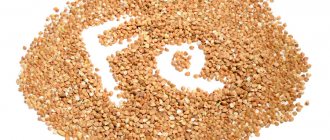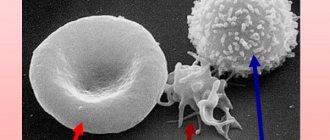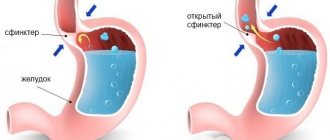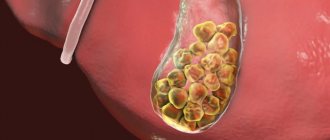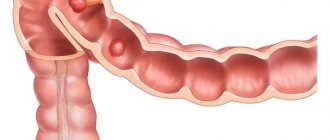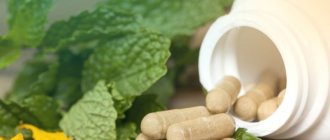Increased accumulation of gases can be observed in the stomach or intestines. In the first case, they come out in the form of belching, in the second they manifest themselves as flatulence. One way or another, the problem requires a mandatory solution. First of all, it is worth understanding which foods contribute to increased gas formation.
As a rule, gases are formed as a result of the activity of bacteria in the intestines, but their amount is determined by the nature of the food and the method of its consumption. So, if you eat quickly and chew poorly, a lot of air will get into the digestive tract along with the food, which will cause the problem to develop. Also, the amount of gas increases when a person consumes large quantities of foods that promote gas formation.
Foods that cause flatulence
What foods cause gas and bloating? Don't worry about increased flatulence if you've recently eaten foods that cause excess gas. This is about:
- flour products, especially rye bread;
- carbonated drinks;
- radish;
- different types of cabbage;
- products that have a high sugar content;
- mushrooms;
- beer;
- apples;
- legumes (peas, beans).
These are the foods that cause gas formation in the intestines of an adult, you have already read the list.
As you know, fruits and vegetables usually increase gas production. And rye bread and beer, when they enter the gastrointestinal tract, cause fermentation processes in it.
People who are lactose intolerant (hypolactasia) will experience symptoms of flatulence if they consume dairy products that are prohibited for their illness.
What foods cause gas formation in the intestines?
If increased accumulation of gases in the intestines often bothers you, be sure to review your diet and, if possible, give up the foods listed below or reduce their amount.
- Dairy products. After consuming them, diarrhea and flatulence often occur. This is explained by the insufficient content of lactose in them, an enzyme that ensures normal digestion.
- Legumes. They contribute to this problem due to their complex carbohydrate content.
- Flour products, confectionery products containing yeast, especially black bread, bran.
- Carbonated drinks: mineral water, lemonade, kvass.
- Alcohol.
- Vegetables containing coarse fiber: potatoes, radishes, onions, garlic, tomatoes, spinach, sorrel, white cabbage, turnips, corn, asparagus.
- Some fruits in raw form, in particular apples, prunes, pears, grapes, peaches, cherries.
- Chewing candies, gum.
As a rule, foods that increase gas formation consist of complex carbohydrates, which require the body a lot of effort and time to digest, which causes the problem to develop. These include fatty, fried dishes, for example, pork, lamb, goose. Eating eggs, fatty fish, mushrooms, and sweets can also trigger flatulence.
In some cases, increased accumulation of gases is caused by the presence in the diet of food that is unusual for our climate zone. This is explained by the unpreparedness of the digestive canal to fully process overseas delicacies. These can be pineapples, peaches, bananas and other fruits.
Even if a product does not belong to this group, but can lead to constipation, it also poses a threat, since such a disorder is always accompanied by flatulence. We are talking about rice, potatoes and fatty fish.
How can you reduce the formation of gases?
To reduce gas formation, nutritionists advise reducing the consumption of the above foods, fried and fatty foods.
It is better for the gastrointestinal tract not to eat three times a day, while filling up in large portions, but to give preference to fractional meals, which involve smaller amounts of food. It is correct to eat five times a day.
Thanks to such changes in diet, you can prevent negative consequences if, for example, you eat borscht or pea soup.
If you know that you have such a feature of your body, and in a certain situation you cannot refuse unhealthy dishes or products, then always have with you medications that reduce gas formation and relieve the discomfort associated with it. In these cases, doctors advise taking the following medications: activated carbon, Pancreatin, Espumisan and Festal.
Doctors recommend!
Monastic stomach tea - for gastritis, ulcers, heartburn and for general health promotion!
Find out more>>>
Flatulence in infants
Often the problem of excessive accumulation of gases in the intestines worries babies. There are several reasons for this:
- instability of the digestive tract;
- violation of the diet by the mother while breastfeeding;
- early introduction of complementary foods or sudden change of formula;
- overfeeding the child;
- air entering the digestive canal during eating.
All this leads to bloating. In infants, this process is called colic. You can get rid of it in several ways; only a pediatrician can determine which one is appropriate in a particular situation. As a rule, medications, dill water and abdominal massage are prescribed. In order not to suffer from such a problem, you should follow basic nutritional rules. First of all, you need to stop overeating and divide the daily amount of food into 5-6 meals. You also need to eat slowly and try not to talk while eating.
After eating, it is better to walk, but under no circumstances lie down. Prepare light meals for dinner. A few hours before bedtime it is better not to eat anything at all. Regular nutrition is also important. It has been proven that eating while watching TV or reading leads to indigestion, so such habits should be abandoned.
https://youtu.be/kNcyVDFcNKs
Why does flatulence occur?
Let's consider the issue of gas formation in the intestines, causes and treatment. One of the most common causes of flatulence is excessive swallowing of air. Aerophagia, as doctors call this phenomenon, is considered an additional cause of flatulence. When we swallow air, it enters the stomach, and then into the intestines, creating discomfort or even pain in the ileum.
Such troubles occur in situations when, for example, a person eats too quickly, bites off large pieces, or swallows food without having time to catch his breath.
In addition, excessive gas formation and bloating are caused by smoking and chewing gum. These habits cause too much air to enter the stomach.
Wrong combination
Sometimes the cause of the development of pathology is a combination of certain dishes that are incompatible with each other. These are:
- fresh baked goods with kefir;
- dairy products and cereals;
- cereals and fresh sour vegetables, fruits.
The following factors can also influence the occurrence of flatulence:
- Stale food.
- Cucumbers, sweet peppers without any dressing or not heat-treated.
- Eating protein foods before bed: eggs, fish, meat dishes, mushrooms.
- If you wash down any dish with liquid, especially when it contains seasonings.
If possible, it is better not to combine foods that provoke the formation of excess gases in the intestines.
In what cases is flatulence a symptom of the disease?
Increased gas formation may indicate:
- peritonitis;
- chronic colitis;
- neurosis;
- constipation;
- the presence of intestinal parasites (worms, a disease called helminthiasis);
- acute intestinal infections;
- liver cirrhosis;
- enteritis;
- pancreatitis;
- intestinal dysbiosis;
- intestinal atony;
- its obstruction.
In case of increased flatulence, bad breath appears. Sometimes it is so sharp that it causes complexes in people and even subsequent neurosis (especially in young boys and girls).
Unpleasant sensations due to excessive formation of gases are observed not only in the stomach and intestines, but also in other organs. For example, patients with flatulence often encounter:
- general weakness, “brokenness”;
- depressed state;
- insomnia;
- muscle pain;
- headache;
- tachycardia (rapid heartbeat);
- heart rhythm disturbances;
- burning in the heart.
Quite often, patients with high gas production experience shortness of breath, sometimes quite intense (with dyspeptic asthma).
Features of the diet for gas formation
To eliminate the occurrence of flatulence from the diet, it is necessary to exclude a number of products that promote gas formation (they are listed in the table), or consume them only in small quantities. It is also necessary to adhere to the basic directions of proper nutrition:
- vegetables must be subjected to heat treatment (it is advisable to do the same with fruits);
- exclude fried foods from the diet;
- season salads only with vegetable oil;
- do not chew chewing gum;
- you need to eat in small portions, 5-6 times a day;
- stop eating fresh bread, baked goods and sweets;
- food must be chewed thoroughly (do not swallow large pieces);
- foods that are poorly digested and, as a result, cause an increase in the amount of gas, should not be eaten at night (it is advisable to eat them only in the morning and at lunchtime);
- legumes must be pre-soaked (overnight is possible) until they swell;
- You should not drink food immediately after eating (preferably 20-30 minutes after a meal) and especially with sweet drinks.
It is also necessary to exclude from the diet not only foods that increase gas formation in the intestines, but also (for adults) bad habits - smoking, alcoholic drinks. Children should also not be given lemonade, kvass, energy drinks, etc. It is not recommended for any person to consume drinks from a straw.
Poorly combined foods
In addition to the above, there is a certain list with a list of products, the consumption of which at the same time can cause excessive gas formation:
- fermented milk and bakery products;
- legumes with sour fruits and vegetables;
- cereals with dairy products;
- fresh vegetables and fruits;
- milk and kefir (yogurt or fermented baked milk);
- fish with eggs.
However, unlike fresh fruits, freshly squeezed juices from them, on the contrary, are recommended and will not cause flatulence. Such drinks are easily digested and quickly absorbed.
Important! You can add to the list dishes that consist of many ingredients (especially those not recommended for consumption). Sweet peppers and cucumbers can provoke gas formation if they are eaten without dressing and fresh. It is undesirable to eat a lot of seasonings and stale food.
https://youtu.be/sIIJpb_SBtA
How should flatulence be treated?
Treatment of excessive gas formation in the intestines gives results only if the cause is determined and eliminated.
For this diagnosis, the gastroenterologist usually prescribes a diet that involves avoiding the gas-forming foods mentioned above.
First of all, you need to give up foods that contain a lot of starch (flour dishes, potatoes), and easily digestible carbohydrates (sweets, ice cream, cakes).
If flatulence was caused by pancreatitis, then the pancreas must first be treated. If the main problem lies in dysbacteriosis, then the doctor will prescribe drugs that normalize the intestinal microflora (Bifiform, Linex).
If a person has helminthiasis, then, of course, first you need to get rid of the parasites. Remedies that get rid of them are “Dekaris”, “Vormil”.
What foods do not cause gas in the intestines?
If you suffer from such a problem, it is worth reviewing and adjusting your usual diet. It is worth including products that reduce the formation of gases. These include:
- lean meat, fish: chicken, turkey, cod;
- fermented milk foods: kefir, yoghurts, fermented baked milk, yogurt;
- crumbly dishes made from rice, buckwheat, millet; The first grain is especially useful;
- bread without yeast, preferably wheat;
- vegetables and fruits that have undergone heat treatment.
To reduce the likelihood of gas formation, you need to eat baked, boiled, steamed foods. It is also worth using spices that reduce the risk of flatulence. These are cumin, marjoram, fennel. They can be combined with difficult-to-digest foods to ease digestion. Ginger and mint can also prevent the development of the problem. They are recommended to be added to tea or desserts.
Exercises to stimulate the release of gases
If you are suffering from severe discomfort, yoga poses may help by removing gas and providing relief from bloating.
- Mountain pose. Parvatasana is an element of sun salutation in yoga. By doing this exercise, you can solve many stomach problems, including flatulence.
You need to get on all fours. Press your palms into the floor, lift your knees and lift your buttocks up, straightening your legs and pressing your heels to the floor.
Pull your chest toward your hips. Hold this pose for a minute.
- Free wind pose. Thanks to this position, excess gases are also removed.
You need to lie on your back, take a deep breath and bend your left leg at the knee, pressing it to your chest. After this, you can exhale. Next, you should press your knee so that your thigh fits tightly to your stomach. You need to inhale again, raise your head and touch your chin to your knee.
The pose is held as long as possible. At the same time, take deep breaths and exhales.
Now you can repeat the exercise on your right leg. Then do gymnastics on both legs.
Doctors recommend!
Monastic stomach tea - for gastritis, ulcers, heartburn and for general health promotion!
Find out more>>>
Get ready to exercise!
Human physical activity can provide partial compensation for intestinal motor weakness. A number of simple exercises will help ease the condition of flatulence, “move” gases along the digestive tract and eliminate constipation.
Exercise 1 - so-called abdominal breathing, when a gentle massage of the intestines is performed by the diaphragm. You need to slowly inhale through your nose, hold your breath for a while, exhale slowly through your mouth and hold your breath for 10 seconds with your stomach pulled in. Repeat 10-15 times.
Exercise 2 - bending. Starting position: feet wider than shoulders, both arms raised. Bending over, as you exhale, you should alternately touch your left leg, the floor in the middle and your right leg with your hands, straighten up and inhale slowly, placing your hands in the starting position. Repeat 15 times. Exercise strengthens the abdominal muscles and stimulates intestinal motility.
Exercise 3 . From a lying position on your stomach, focus on your hands, staying in this position for 5 seconds, holding your breath. Then return to the starting position. This stretches the abdominal muscles and deep-lying abdominal muscles, allowing excess air to be expelled.
Exercise 4 . Lying on your back, you should pull your legs to your chest, grab your knees and hold them for about a minute. The exercise provides intense impact on the anterior abdominal wall.
Exercise 5 . Lying on your back, bend your knees and relax your stomach as much as possible. Use your fingertips to make circular “pushing” movements clockwise.
Even a slight decrease in body weight can reduce abdominal pressure and the load on the intestines.
Fats for bloating: benefit or harm
Nutrition for intestinal colitis and flatulence should contain polyunsaturated fatty acids. To do this, you need to include unrefined vegetable oils in your daily diet: olive, flaxseed, sesame, cottonseed, grape seed. You should add them to first courses, salads, and side dishes.
The consumption of animal fats and fried foods is strictly prohibited. When preparing soups, frying in oil is prohibited. You can add a teaspoon of your favorite oil to the finished soup, immediately before eating it.
Consequences of poor nutrition
Failure to follow a diet during intestinal bloating (flatulence) will result in excessive gas production becoming permanent. As a result, beneficial microflora will die and putrefactive and fermentative bacteria will multiply. As a result of their vital activity, they release toxins. Their number will also begin to increase with the proliferation of pathogenic microflora.
As a result, toxins will enter the blood in large quantities, which will cause general intoxication of the body. This will negatively affect not only the gastrointestinal tract, but also all internal organs and systems. A deficiency of normal microflora leads to hypovitaminosis, since vitamins B and K are produced by “positive” bacteria.
Proper nutrition during intestinal bloating will help prevent further increased gas formation. At the same time, the functioning of the digestive system is normalized, and stool is restored. However, before planning a diet, you should consult your doctor. Some of the permitted products may be included in the list of prohibited ones (depending on the cause of flatulence).
Nutritional Features
For constipation
If constipation is associated with excessive gas formation, you need to revise your diet in favor of products that have a laxative effect. These are foods high in fiber. If you have problems with excessive gas formation, it is recommended to exclude such foods. Experts insist on soft fiber and advise eating prunes, carrot and beet juices, and plant foods that do not cause fermentation processes in the body. A mandatory condition of the diet is the inclusion of unrefined vegetable oil in the diet. This causes additional lubrication of the intestines and helps with bowel movements. Increased consumption of purified water. In other key aspects of the diet for excessive gas formation and constipation, it is based on the same provisions.
With irritable bowel syndrome
For irritable bowels, the diet should include porridge, pureed soups and boiled vegetables.
The main provisions of the diet for simultaneous illness and IBS (irritable bowel syndrome) with flatulence are the use of food products that have enveloping properties of the intestinal walls. These products include:
- boiled porridges, pureed soups and vegetables only in boiled form;
- all foods that irritate the intestines are excluded: garlic, onions and various spices;
- consume all food and drinks only warm;
- fried and smoked foods are excluded;
- food is taken fractionally and in small portions.
Prohibited food ingredients
The therapeutic diet completely excludes foods that contribute to the activation of unpleasant symptoms. You should not combine incompatible products, even from gas formation. Fatty foods, sweets, smoked foods, and fresh baked goods also have a negative effect on the intestines. Prohibited foods for intestinal flatulence are:
- legumes (lentils, beans, peas, beans);
- any nuts;
- fresh bakery;
- fatty meat (especially lamb), fish;
- corn;
- fresh pastries, freshly baked bread;
- cabbage (Brussels sprouts, cabbage, cauliflower, broccoli);
- carbonated drinks, especially sweet soda;
- soy products;
- whole milk (cream, ice cream).
If you are lactose intolerant, it is important to exclude not only whole milk, but also fermented milk products, muesli, and all baked goods. It is also better not to eat bran in its pure form, or you should wash it down with plenty of water. Products that reduce gas formation in the intestines must be of good quality and fresh. You can learn more about foods that cause increased gas formation in the following article.
For mild cases of flatulence and increased gas formation, the usual limitation of cookies, buns, and black coffee will help. Fresh apples (in large quantities), dried fruits and dark chocolate should be avoided.
Dried fruits are ideal as a snack or dessert. These products perfectly satisfy hunger, prevent constipation and fight excess weight.
If the patient is prone to constipation due to increased gas formation, foods that have a mild laxative effect should be included in the diet. Be sure to include a high fiber content in the menu (fresh or boiled vegetables, fruits, bran liquid). However, you should only eat foods that do not form gases (exclude cabbage in any form, legumes).
Products that reduce gas formation and bloating can be used as a menu for other diseases of the gastrointestinal tract. A prerequisite is the introduction of vegetable oils into the diet, especially flaxseed, olive, corn, and sunflower. Oils create a kind of film on the intestinal mucosa, which prevents trauma to the mucous membranes and promotes the removal of feces. For flatulence and constipation, you can include dried fruits (prunes, dried apricots, raisins), honey, finely crushed walnut kernels, and pine nuts in the menu.
https://youtu.be/wc75JqLWDJ4
If the patient’s medical history includes an inflammatory process, ulcerative erosive colitis and irritable bowel syndrome, then the menu should be revised in favor of the following products without gas formation:
- boiled vegetables and fruits that relieve bloating (potatoes, beets, carrots);
- pureed soups;
- minced meat and fish twisted several times;
- drinking dried fruit compotes, rosehip decoction.
Products that reduce gas formation in the intestines should not be combined in one dish at once. It's better to eat separately. Food should be eaten warm in small portions. If your stool is abnormal, you should be tested for dysbacteriosis or occult blood to rule out more serious pathologies. If other pathologies are detected, mandatory drug treatment is carried out.
A diet for increased gas formation involves a complete rejection of coarse fiber, simple carbohydrates and allergenic foods.
What not to eat during flatulence:
- various brans;
- all types of legumes;
- corn;
- all varieties of rice;
- sweet;
- flour;
- containing lactose;
- containing gluten;
- chocolate;
- all citrus fruits.
As for permitted foods, the main diet menu for bloating is made up of neutral foods that do not interfere with intestinal function, thereby not causing discomfort.
What can you eat if you have flatulence:
- baked goods made from central wheat flour;
- lean fish (perch, cod),
- lean meat and poultry (beef, veal, rabbit meat, chicken, turkey);
- buckwheat, oatmeal, semolina;
- dairy products with a minimum percentage of fat content: cottage cheese, sour cream;
- low-fat broths and soups;
- boiled eggs and omelettes;
- pumpkin, potatoes, carrots, zucchini, zucchini;
- herbal tea (rose hips, linden, bird cherry, currants, blueberries, etc.),
- cocoa, compotes, jelly
- leafy greens
- laurel leaf.
The purpose of fasting is to reduce the load on the gastrointestinal tract, get rid of bloating and increased gas formation by reducing acidity in the stomach in a healthy and gentle way. The patient will not feel hungry.
The IBS diet excludes the following foods that cause flatulence:
- salted, fatty fish and meat, including lamb;
- legumes;
- dairy products with a high percentage of fat;
- dairy products;
- cabbage;
- radish;
- fermentation products, including drinks;
- mushrooms;
- nuts;
- marinades, smoked meats, fatty and hot sauces;
- pearl barley and millet;
- fresh flour products, including bread;
- foods rich in fiber;
- hard-boiled chicken eggs;
- pasta;
- semi-finished products;
- chocolate, ice cream;
- carbonated drinks;
- sugar substitutes.
Depending on the root cause factor, the list may be supplemented. In most cases, foods that cause flatulence should not be consumed even in remission, as they cause fermentation in the stomach and inhibit the production of beneficial bacteria in a weakened gastrointestinal tract.
Flatulence causes excessive gas formation and the following products are prohibited for consumption:
- Legumes.
- Cabbage crops and radishes.
- Pears, bananas, and grapes.
- Lamb, salted and fatty fish and meat.
- Fermentation products.
- Fried and smoked products.
- Nuts, mushrooms.
- Millet and pearl barley.
- Whole milk, cream, ice cream.
- Coarse bread baked during the current day.
- Pasta, pies, dumplings.
- Hard boiled eggs.
- Marinades and pickles.
- Carbonated drinks.
- Sugar substitutes.
Nutrition for irritable bowel syndrome with flatulence
Irritable bowel syndrome is manifested by diarrhea and flatulence, and is classified as a functional change. However, the body loses water, electrolytes, and undigested nutrients.
- the amount of vegetable fats increases due to oils (olive, sunflower, flaxseed);
- coarse dietary fiber from cereals (buckwheat, pearl barley, millet) is added;
- Extractive substances and essential oils (seasonings, herbs, mustard, horseradish) are excluded;
- animal fats with a high cholesterol content are limited (meat, sausages, jellied meat, rich broths);
- protein is added through lean chicken meat;
- All foods that stimulate peristalsis are prohibited (carrots, beets, prunes, dried apricots, raw fruits);
- limit light carbohydrates by prohibiting grape and apple juice, bananas, and nuts.
Diet for flatulence - what foods cause bloating, allowed foods
A feeling of heaviness, increased gas formation, bloating and distension of the abdomen, pain - these are the most common and unpleasant symptoms of flatulence. The disease can be annoying at any age and arise due to various factors.
Meanwhile, she is successfully retreating while following simple nutritional recommendations. A special diet for flatulence concerns not only permitted and prohibited foods, but also the frequency of food intake and its temperature.
1. Nutrition for flatulence and its tasks 2. How to get rid of flatulence with the help of diet 3. Allowed foods for bloating 4. What foods cause bloating? 5. Sample menu for bloating
Signs of flatulence appear in every person from time to time. They should not be ignored, as they may be one of the manifestations of a more serious disease of the gastrointestinal tract. In addition, in the absence of proper treatment, the patient may end up with a protracted allergic reaction.
A huge amount of dairy products in the diet, especially if you are lactose intolerant.
- Inflammatory processes in the intestines (colitis, enterocolitis).
- Consumption of legumes, vegetables and fruits in large quantities.
- Dysbacteriosis and deficiency of beneficial microflora in the intestines.
- Eating incompatible foods at one time.
- Intestinal parasites, including worms.
- Bad habits: talking while eating, rushing and not chewing food enough, regularly chewing gum. The latter contains maltodextrin, which promotes increased gas formation.
All of the above factors provoke fermentation of the contents in the intestines and trigger putrefactive processes in it, which result in bloating and increased gas formation. A therapeutic diet helps prevent them.
The main goals of such a diet:
- organization of a complete and balanced diet with all the vitamins and microelements a person needs;
- normalization of intestinal motility;
- restoration of normal microflora;
- prevention of rotting and fermentation processes in the intestines;
- minimizing the risk of developing inflammatory processes.
Important! In medical practice, all these tasks are met by treatment table No. 5 according to Pevzner. Meanwhile, you should not blindly follow his recommendations, since the individual characteristics of each organism, as well as the course of the disease, force the attending physician to adjust the nutrition of each patient.
The daily intake of nutrients is of great importance for the normalization of a person’s condition. According to him, the body should receive daily:
- up to 120 g of proteins;
- 50 g fat;
- up to 200 g of carbohydrates, excluding simple sugars.
Also, don't overeat. The optimal energy value of the diet is 1600 kcal.
Eat food every time only in a calm environment. Snacks and “eating on the run” only make the situation worse. Food should be chewed thoroughly. It is not recommended to talk at the table, since on the one hand this can provoke the swallowing of air, and on the other hand, it can increase the load on the gastrointestinal tract.
- Do not wash down food with water. It is better to drink drinks after 30 – 60 minutes.
- Develop a unique regime for yourself and eat at certain hours, thanks to which you will tune in to the desired mood and digestive tract. It will intensify its work at the specified time, simultaneously releasing gastric juice. In addition, enzymes and bile acids will enter the body at certain hours, thereby minimizing the risk of developing complications in the gastrointestinal tract, which usually appear with irregular nutrition.
- Divide the amount of food consumed into 5 – 6 meals. Such a fragmented diet will allow useful substances to be broken down in the intestines in a timely manner and absorbed. At the same time, all processed products will be promptly removed from the body, preventing the development of rotting and fermentation.
- Eliminate fatty and fried foods from your diet. It is better to boil, bake, stew, or steam dishes.
- Monitor the amount of salt you consume. Ideally, it should not exceed 6–8 g per day, otherwise the food will irritate the intestinal walls.
- Maintain drinking regime. Just 2 - 2.5 liters of liquid per day allows you to promptly remove processed products from the body and prevent fermentation.
Note! The temperature of the food entering the body also affects the functioning of the intestines. The therapeutic diet for flatulence involves eating warm foods. Excessively hot or cold temperatures increase the production of gastric juice by the stomach and enzymes by the pancreas, which leads to intestinal irritation.
Correct selection of foods for one meal can also reduce the manifestations of flatulence. It is not recommended to combine salty and sweet foods, vegetables or fruits and milk, milk and animal proteins. Such compounds load the gastrointestinal tract, increase intestinal motility, lead to fermentation and increased gas formation.
For flatulence, doctors advise including in the diet those foods that do not cause increased formation, as well as those that have carminative properties and, therefore, alleviate the patient’s condition.
It is better to give preference to food that normalizes stool due to soft and slow passage through the intestines. However, special attention should be paid to those products that can affect its microflora, stimulating the growth of beneficial bacteria.
Important! The diet for flatulence should be maximally enriched with vitamins and microelements, including potassium, iron, calcium, as well as lipotropic substances, as they have a beneficial effect on bile and blood vessels.
crackers made from wheat flour and dried bread;
- lean fish - it can be boiled in pieces or used as part of cutlets and other minced meat dishes;
- lean types of meat without skin - you can use it to make steamed cutlets, meatballs, meatballs or soufflé;
- low-fat and non-acidic dairy products, cottage cheese, sour cream, yogurt, curd soufflé or biokefir, provided that the person does not have lactose intolerance;
- boiled eggs (not hard-boiled), omelettes;
- drinks: green tea, rose hip, bird cherry or blueberry decoction, cocoa prepared with water, fennel tea, compote;
- vegetables: pumpkin, potatoes, carrots, zucchini;
- soups cooked in weak meat or fish broths;
- porridge: buckwheat, oatmeal, semolina, rice, cooked in water and ground;
- greens: dill and parsley;
- bay leaf, cumin.
For flatulence, products that increase gas formation are undesirable.
Food containing plant coarse fiber. The latter nourishes the intestinal microflora, as a result of which its growth increases and, as a result, the amount of waste products that provoke fermentation processes in the intestines.
- Simple carbohydrates. They are not only quickly digested, poorly saturating the body, but also contribute to the rotting of food masses.
- Products that a person cannot tolerate, for example, milk for lactose intolerance. If this rule is ignored, a protracted allergic reaction may develop.
Additionally, you should avoid foods that require prolonged digestion and, accordingly, increase fermentation. A striking example of this is protein foods of animal origin, that is, meat, which, due to connective tissue, does not pass through the gastrointestinal tract for a long time.
Note! The situation with flatulence is also aggravated by products that contain a lot of organic acids, essential oils, preservatives and food additives. By irritating the intestinal mucosa, they stimulate peristalsis.
Prohibited products include:
- fresh bread made from wheat or rye flour, pastries;
- stringy fatty meat and fish;
- salted, smoked, including caviar;
- cocoa made with milk, coffee;
Important! Consulting a doctor will help you create your diet as correctly as possible with permitted and prohibited foods, depending on other symptoms of the disease - diarrhea or constipation, irritable bowel syndrome.
Failure to comply with the doctor’s recommendations entails constant excess gas formation, rumbling and pain in the stomach, digestive problems and lack of regular bowel movements.
As a result, over time, the normal intestinal microflora dies, and its place is taken by bacteria that provoke decay. The worst thing is that in the process of their life, they release toxins that enter the blood and negatively affect the liver and other organs.
Following this, hypovitaminosis occurs and the person worsens or develops other diseases.
| Day of the week/meal | Breakfast | Lunch | Dinner | Afternoon snack | Dinner |
| Monday | Rice porridge, compote | Cheese sandwich, green tea | Spinach soup cooked in chicken broth, mashed potatoes, steamed fish, tea | Kissel | Buckwheat porridge, carrot salad |
| Tuesday | Oatmeal, green tea | Low-fat cottage cheese with sour cream | Vegetable soup, yesterday's bread, chicken with vegetables, compote | Favorite fruits, except forbidden ones | Stuffed cabbage rolls, rice |
| Wednesday | Steamed rice, egg | Pancakes with dried apricots and yogurt, green tea | Buckwheat soup with chicken broth, steamed beef with stewed vegetables | Muesli with yogurt | Baked potatoes with vegetables, compote |
| Thursday | Oatmeal with dried fruits, jelly | Sandwich with cucumber and boiled beef, green tea | Vegetable soup, steamed fish with rice | Crackers and kefir | Salad with vegetables and boiled chicken, seasoned with sour cream |
| Friday | Oatmeal, egg | Baked zucchini stuffed with minced meat, tea | Buckwheat soup, potato casserole with meat, compote | Baked apples | Steamed vegetables with chicken meat, juice |
| Saturday | Buckwheat and jelly | Cottage cheese with dried apricots | Chicken broth with vegetables, chicken fillet, compote | A handful of dried fruits steamed with water | Stuffed peppers, green tea |
| Sunday | Rice porridge, tea | Cheesecakes baked in the oven, a little sour cream and tea | Chicken broth, boiled chicken, stewed vegetables, compote | Kissel, croutons | Buckwheat, stewed carrots, steamed beef cutlet |
Why does the stomach become “bloated”?
- First of all, bloating occurs when a person eats incorrectly, for example, eats too much food (a separate nutrition system will help solve this problem). Perhaps the diet contains foods that provoke flatulence, and there are many of them.
- The reason for excess gas formation is also the fact that certain products are not “processed” effectively enough in the digestive organs, this becomes the cause of fermentation. If the body lacks “native” enzymes, malfunctions in the digestive system occur, as these substances change the complex components of foods in order to speed up their absorption in the body.
- Bloating can also appear with an excess of consumed vegetables, fruits, fiber and bran, or when using sweeteners instead of sugar in order to make food less caloric.
- As some people get older, the digestion of dairy products worsens; children and adolescents may also experience a similar problem because their bodies do not produce enough lactose, the enzyme that breaks down milk sugar.
- But it all depends on the specific organism: some people do not suffer from flatulence, eating absolutely any food, while others are constantly bothered by this problem, even despite proper nutrition.
- Although, in addition to nutrition, there are other “culprits” for stomach problems, for example, a sedentary lifestyle and refusal to exercise.
Symptoms of bloating
Simply put, “bloat” refers to the sensation of gas buildup in the digestive system, which causes the belly to swell to an uncomfortably large size. Some people jokingly call such a swollen tummy “pregnant,” but there is nothing to laugh about. Bloating is different from belly fat because it is temporary and caused primarily by accumulated gas that stretches the abdominal walls, causing it to puff up and stick out.
Luckily, in most cases there is no need to worry about bloating. It can be eliminated with small changes in diet and lifestyle, although not always. There may be something big hiding behind the feeling of fullness, flatulence and abdominal pain. If you can find the cause of bloating, then you need to decide whether it is compelling enough to see a doctor.
If you have bloating, check for other symptoms, such as:
- heat
- skin rash or hives
- watery eyes, sore throat, or other allergy symptoms
- constipation or diarrhea
- nausea or vomiting
- blood in urine or stool
- unexplained weight loss
- problems going to the toilet
- pain when palpating lymph nodes in the groin, throat or armpits
- fatigue
- attention problems and brain fog
- irregular periods
- haemorrhoids
How to prepare dietary dishes: examples of recipes
The technology for preparing dietary food is quite simple and does not require special knowledge.
Vegetarian soup
Ingredients:
- carrots - 100 g;
- white onion - 1 pc. medium size;
- parsley - 20 g;
- dill 10 g;
- tomatoes - 200 g;
- salad pepper - 100 g;
- zucchini - 400 g;
- potatoes - 300 g;
- salt, pepper - to taste.
Preparation procedure:
- Prepare ingredients for soup.
- Pour 2 liters of water into a deep saucepan and put on fire.
- Wash, peel and cut the carrots into small cubes.
- Peel the onion and chop finely.
- Add the resulting products to hot water.
- When the broth begins to boil, add a bunch of parsley into it.
- 5-8 minutes after boiling, add zucchini and potatoes cut into medium cubes into the pan.
- Cook for another 5 minutes.
- At the end of cooking, add chopped tomatoes, lettuce peppers cut into rings and cook until soft.
- When finished, remove the soup from the heat and add salt and pepper to taste.
- To serve, garnish with dill and parsley.
Dietary vegetable soup - easy food for an irritated digestive tract
Rice porrige
Ingredients:
- rice - 250 g;
- water - 500 ml;
- butter - 10 g;
- salt, sugar - to taste.
Preparation:
- Initially, you need to rinse the rice under running water.
- Pour rice into boiling water and stir until it stops sticking to the bottom of the pan.
- Once boiling, reduce heat and simmer for 10–15 minutes.
- Add salt and sugar to taste.
- Cover with a lid and simmer for another 5–8 minutes.
- Then remove the porridge from the heat, add a piece of butter to it and cover with a lid and a towel.
- The porridge should be allowed to rest for 10 minutes.
Boiled rice gently coats the intestines and is quickly digested
Video: preparing dried fruit compote
https://youtu.be/wHBwjXwXT-o
Choosing the right products
What other foods make your stomach bloat? Gastroenterologists recommend not to eat foods that are incompatible with each other, i.e. proteins and carbohydrates. It is important for adults to replace dairy products with fermented milk. To reduce the risk of flatulence, you can carefully select cabbage varieties that should be soft, so the following varieties of vegetables are most suitable:
- Brussels sprouts;
- Savoy;
- broccoli;
- colored.
The winter variety of white cabbage can cause stomach and intestinal irritation if the vegetable is consumed raw. Blue cabbage can be considered an even heavier variety. The soft-leaved variety of white sugar cabbage is easier on the digestive system.
Salt and spices in large quantities can also cause bloating. You should not eat a lot of fried or fatty foods, as well as baked foods. The foods you eat are healthy if they do not cause fermentation in the intestines. These include:
- potato;
- wheat bread;
- dietary meat;
- fish;
- low-fat cottage cheese;
- baked fruits;
- dairy products;
- sunflower and olive oil.
It is best to leave the listed products for the first half of the day. This is due to the slowing down of the digestion process during sleep. Otherwise, the toxins accumulated during the day will cause discomfort at night. As a result, toxins will penetrate into the intestinal cavity.
Basic nutrition rules
Experts recommend following the following dietary rules:
- Drink a cup of plain water on an empty stomach in the morning.
- Dishes should not be too hot or cold.
- Overeating should not be allowed.
- Establish a drinking regime - drink at least two liters of liquid per day.
- You can drink after eating half an hour later.
- Take meals at the same time.
- It is recommended to eat fruits a few hours after eating the main meal.
- Before going to bed, drink water, tea or kefir.
- It is not advisable to chew chewing gum.
- The simultaneous consumption of plant fiber and milk, salty and sweet foods is not combined.
- Before eating, take 40 ml of dill seed decoction.
In case of flatulence, you should follow fractional meals - eat in small portions, but increase the frequency of meals to six times a day.
Other causes of gas formation
A person who is accustomed to using chewing gum often experiences the effect of flatulence. Especially if you do it on an empty stomach. Our microflora really likes sorbitol, which is contained in chewing gum. And it processes it, releasing quite a lot of gas. In addition, when chewing gum, a person, as a rule, is talking at this moment, as a result of which air is swallowed.
Stress can cause increased gas formation. Our brain and nervous system are connected to the intestines, which react to emotional shock with spasms and slowdown of activity. The microflora has more time and food, and it takes full advantage of its chance.
A sedentary lifestyle often leads to problems with increased gas formation. Office workers and housewives are at risk. The fact is that when we move little, our intestines become lazy. The blood flow to it is reduced, metabolic and digestive processes slow down, and the pressure inside the abdomen, that is, intestinal tone, decreases.
Sometimes flatulence can be a symptom of a dangerous disease:
- intestinal obstruction due to tumor, hernia
- acute intestinal infection
- presence of parasites
- diseases of the upper gastrointestinal tract (gastritis, pancreas, gall bladder)
Gas moving through the intestines towards the exit cannot go back. There are valves there that don't let it back in. At the outlet, the gas reaches body temperature and even slightly higher - 37 degrees. Its speed is 3 m/sec.
Products that reduce gas formation
To seriously help your gastrointestinal tract, you should give it a complete rest once a week. For this, it would be nice to arrange fasting days. Then the functioning of the intestines would improve.
Some products that have the properties of enhancing the secretion of gastric and intestinal enzymes for digesting food can also normalize the activity of the digestive canal:
- dairy products
- baked fruits, vegetables
- wholemeal bread with bran
- boiled meat
- porridge, especially buckwheat and millet
- spices
Habitual tea and coffee should be replaced with herbal teas. It's better if it's mint and chamomile. These herbs are good for tired and irritable bowels. They relieve spasms and normalize digestion.
Folk remedies for flatulence
Sluggishness of the intestines leads to the retention of food mass, its compaction and the formation of constipation. According to the feedback principle, filling the intestinal lumen with feces causes a further weakening of peristalsis and limits its transport capabilities. Tiny gas bubbles, accumulating in the intestinal mucus, form a viscous foam that covers the intestinal walls and reduces their permeability, the synthesis of a number of vitamins and the removal of abnormal digestion products.
Herbal infusions (infusions and decoctions) are excellent for relieving painful symptoms of flatulence. The essential oils they contain are bactericidal and also act as natural antispasmodics and “defoamers,” relieving signs of increased gas formation.
The most popular and effective means of combating flatulence is dill soda. The secret of its popularity is the ease of preparation and wide availability of raw materials: 1 tsp. dill seeds must be poured with a glass of boiling water and left in a thermos for 40 minutes. It is very important to take the product daily before meals.
Infusions of chamomile and sage have a similar effect. Brew 1 tbsp with a glass of boiling water. dry raw materials and leave for at least half an hour, like tea, covered with a napkin.
Sample weekly menu
Nutrition for flatulence should be balanced and exclude foods that cause increased gas formation. Sample menu for one week:
| Breakfast | Dinner | Dinner | |
| Monday | Boiled rice | Baked chicken breast with vegetables | Salad of boiled beets and carrots, buckwheat |
| Tuesday | Oatmeal with prunes | Turkey soup with vegetables | Stuffed peppers |
| Wednesday | Boiled buckwheat with the addition of boiled dried fruits | Boiled beef with mashed potatoes on water | Vegetable salad with chicken breast, seasoned with sour cream |
| Thursday | Fruits | Steamed fish with rice and chicken broth | Baked Potatoes with Turkey |
| Friday | Boiled rice | Chicken broth, boiled beef with buckwheat and vegetables | Boiled eggs with vegetable salad |
| Saturday | Boiled egg and oatmeal on water | Potato casserole with turkey | Boiled chicken with vegetables |
| Sunday | Steamed cheesecakes, yogurt | Chicken soup, buckwheat with baked beef | Vegetable salad with boiled fish |
Between main meals you need to eat twice more, including foods that do not cause flatulence in your diet. For example, for an afternoon snack you can eat crackers with cheese, cottage cheese, yoghurt, meat sandwiches with cucumbers, fruit, pancakes. If you are really hungry, cook baked zucchini with minced meat.
Lunch should also be light. You can eat muesli or croutons with yogurt, baked apples. Finish each meal after 20 minutes with tea (preferably green), compotes, juices.
What to do to reduce flatulence? Once a week it is advisable to have a fasting day. For this, fermented milk drinks are usually taken. They are drunk instead of breakfast, afternoon tea, dinner, lunch and dinner. Also, for a fasting day, you can choose any permitted fruit (but only one type) or replace them with compotes and dried fruits.
Causes of strong gas release
The gases in the intestines consist of air that enters it when eating, water, talking, etc., carbon dioxide formed during the processing of incoming air and gases generated from the vital activity of microorganisms. Their accumulation in the intestines bursts it, bloating occurs, and this causes pain and discomfort. In addition, a lot of gases with an unpleasant odor are released. If the intestines work normally, then the body releases 0.5 liters of gas masses, but with flatulence the volumes reach 3 liters. The release of gases is accompanied by a pop, which is considered indecent when among people. That's why you need to know how to deal with increased gas formation in the small intestine. And for this you need to find out the reasons for their formation:
- Eating foods that cause fermentation. It causes the release of gas bubbles, the formation of microflora waste in the intestines.
- Genetic disorders that cause intestinal inflammation, as well as intolerance to certain products containing lactose, causing disorders in food processing.
- The penetration of air into the digestive system when you have to hastily eat food or smoke.
- Physical inactivity, which provokes poor intestinal motility.
- Stress that impairs digestion. In stressful situations, increased amounts of adrenaline and norepinephrine are released. They contribute to the narrowing of blood vessels that nourish the intestines and inhibit its functioning.
- Treatment with certain medications.
- Injury to the digestive organs.
- Alcohol consumption.
These causes of increased gas accumulation are common to everyone, even children. In women, flatulence occurs before the onset of menstruation and during pregnancy. In order not to endure unnecessary suffering due to the development of flatulence, pregnant women should know how to reduce increased gas formation in the intestines.
Bad habits that lead to flatulence
Perhaps many people make mistakes that lead to increased gas formation.
The first bad habit is eating quickly. In this case, we begin to chew food worse. It is not completely digested in the stomach. The intestines react to this with spasms and colic. Its walls become irritated, and this leads to increased gas formation.
The second mistake is talking while eating. At the same time, food is chewed worse, and air is also swallowed.
The third wrong habit is to wash down your food. If you drink a lot of water while eating, gastric juice loses its optimal concentration and food digestion slows down. You can afford two or three sips. They will not seriously interfere with the digestion process.
